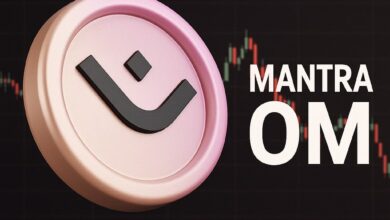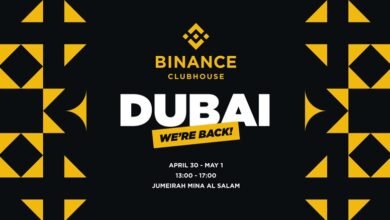Why the Middle Class is More Excited About Crypto and How Trump is Tapping into Their Hopes

The rise of cryptocurrency has often been portrayed as the domain of risk-takers, tech enthusiasts, and young investors hoping to strike gold. But as the crypto ecosystem matures, a fascinating trend has emerged—the middle class is becoming increasingly excited about crypto. While the rich are content with their stable wealth and the older generation views it with skepticism, the middle class is seeking a faster path to financial independence, and crypto is their vehicle.
This leads us to a provocative political scenario: Could Donald Trump become the “crypto president” of the middle class?
The Middle Class and Crypto: A Marriage of Aspiration and Opportunity
Crypto ownership is primarily driven by younger generations, with Millennials and Gen Z making up 94% of all crypto holders. The allure is clear: middle-class professionals—especially those in industries like banking and finance—have the knowledge to understand how markets work, but they often feel that the traditional pathways to wealth are too slow. Crypto offers a shortcut.
For the middle class, crypto is a way to amplify opportunities and accelerate the journey to financial security. While high-net-worth individuals, such as real estate moguls and senior executives, have already built their fortunes through more stable investments, middle-class investors are still seeking that golden ticket. The accessibility and volatility of crypto make it particularly appealing—it’s fast, it’s accessible, and it has the potential for rapid returns.
The Demographics Driving the Trend
According to research, Gen Z and Millennials dominate the crypto market, but it’s not just age—it’s about socio-economic standing. Middle-class investors are more inclined to invest in crypto than wealthier individuals, with data showing that over 55% of crypto holders are middle-income earners. These investors are not putting millions into crypto, but rather smaller amounts with the hope of outsized returns. They see crypto as a way to break through financial ceilings that traditional investments can’t breach as quickly.
In the Middle East and North Africa (MENA) region, crypto adoption has surged by 166% between 2022 and 2024, with over 500,000 daily traders reported in February 2024. The UAE leads the charge, with the region expected to grow to 700,000 active crypto users by the end of 2024 . In the UAE, 29% of investors view digital assets as a more practical way to hold wealth, and 72% of crypto adopters invest primarily in Bitcoin. These stats reveal that middle-class investors in regions like MENA, particularly the UAE, are embracing crypto as an efficient tool to diversify wealth and speed up financial gains.
The Trump Factor: Crypto as Political Currency
Donald Trump is a polarizing figure, but if there’s one thing his campaign strategy has excelled at, it’s tapping into undercurrents of dissatisfaction and harnessing them for political gain. Trump’s base is largely middle-class—the very group that is most attracted to crypto for its potential to disrupt the traditional financial system.
Trump, who has historically been critical of crypto, now has a unique opportunity. By positioning himself as the champion of financial independence, particularly in the context of the middle class, he can tap into the growing crypto excitement. Crypto could serve as a symbol of anti-establishment sentiment, the same sentiment that fueled his rise to political prominence. Middle-class voters who see the traditional financial system as rigged against them may view Trump’s potential embrace of crypto as a powerful statement.
The Barriers to Wealth for Older, Wealthier Investors
Let’s face it—wealthy older investors don’t need crypto. They’ve made their fortunes through tried-and-true methods like real estate, equities, and corporate investments. These individuals are less likely to take the plunge into a volatile asset class when they already have a reliable income stream.
Why would a real estate developer in Dubai, making millions from luxury properties, suddenly decide to gamble in a market he doesn’t fully understand? For him, crypto is simply too volatile to consider a serious investment. The same goes for high-level executives and bankers—they already know how to make money, and crypto is just too risky to disrupt their comfort zone.
In contrast, the middle-class banker, who may not have amassed a fortune yet but understands how markets work, sees crypto as a way to speed up their financial journey. They know the rules of the traditional financial game, but crypto offers a tantalizing shortcut. It’s a new frontier where risks are high, but so are the rewards.
The Numbers Back It Up
Numbers tell the real story: 67% of crypto holders in 2021 were spurred to invest during the pandemic, when the middle class was seeking alternative ways to secure financial stability. Furthermore, over 55% of U.S. crypto users plan to increase their holdings despite the market’s volatility. This eagerness to invest in an uncertain market underscores the optimism that crypto holds for the middle class—an optimism that politicians like Trump can easily tap into.
Meanwhile, in the MENA region, countries like the UAE have been establishing themselves as crypto hubs. With a 29% belief in the practicality of digital assets and rapidly growing adoption—up by 166% in just two years—the Middle East serves as a prime example of how the middle class is turning to crypto as a faster path to wealth.
Crypto as the Middle Class’s Hope—and Trump’s Opportunity
At its core, the rise of crypto is about more than just money—it’s about aspiration, empowerment, and breaking free from traditional financial constraints. For the middle class, crypto represents an opportunity to gain wealth in ways that the wealthy don’t need and the older generation can’t comprehend.
And as the 2024 election approaches, don’t be surprised if Trump begins to flirt with the idea of becoming the “crypto president.” After all, crypto is not just a currency of the future—it’s a political currency for today’s middle-class dreamers.





